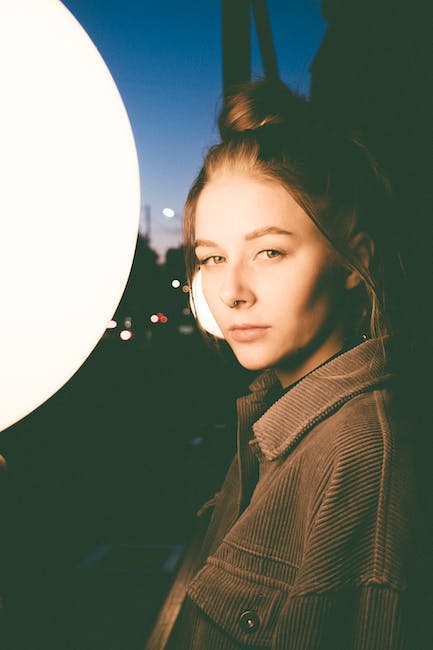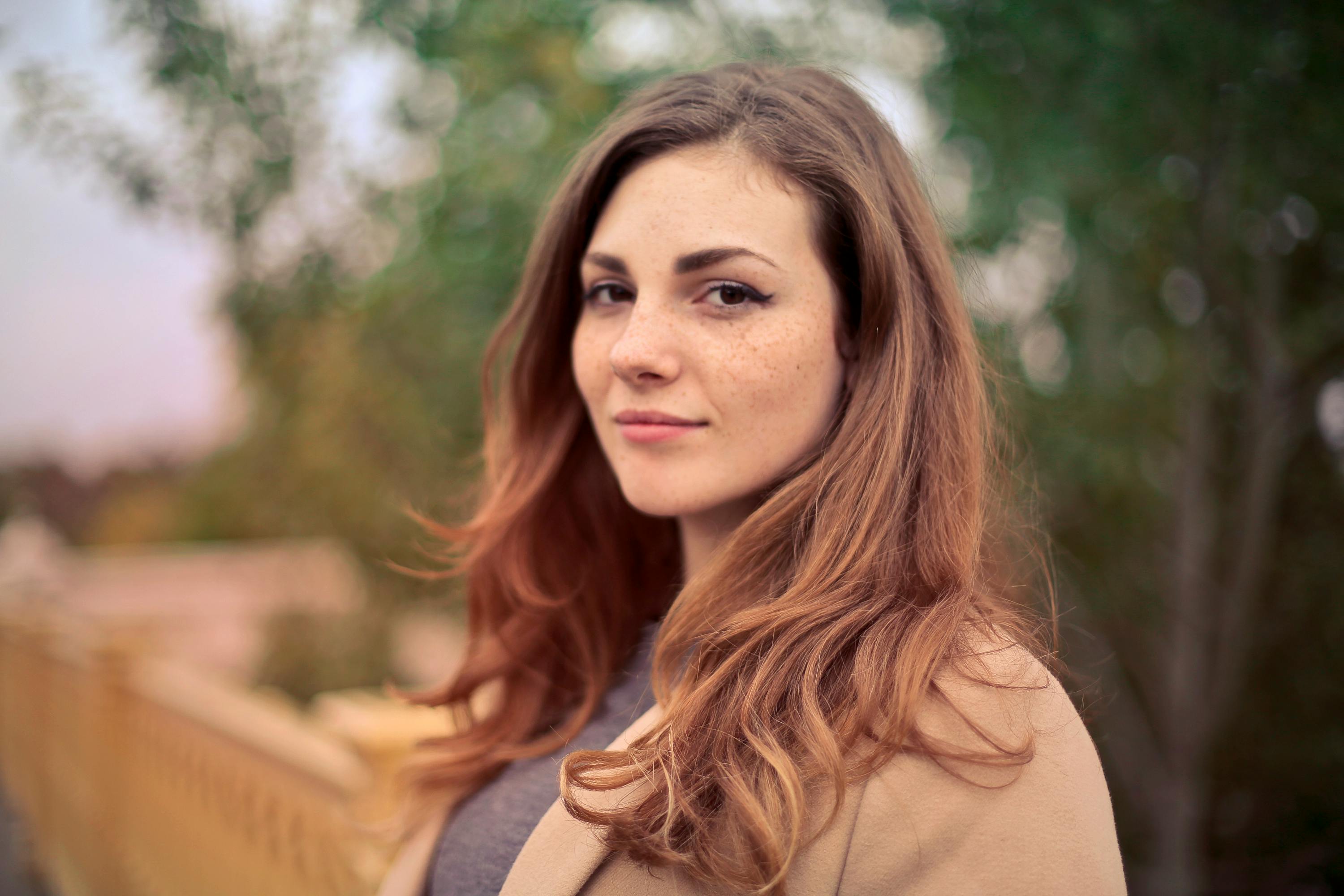How To Wear Your Hair Up Without Getting A Headache

Having your hair up can be a great way to keep cool, look stylish, and keep your hair out of the way. However, wearing your hair up can sometimes cause headaches due to the tension that is put on your scalp. Fortunately, there are a few tricks you can use to wear your hair up without getting a headache. In this guide, we’ll go through some tips and techniques for how to wear your hair up without getting a headache.Do’s:
1. Use the right product to hold your hair in place. Choose a product that works best for your hair type.
2. Make sure you brush and detangle your hair thoroughly before putting it up.
3. If you are using bobby pins to secure your updo, make sure they are the same color as your hair so as not to stand out.
4. Consider adding accessories like ribbons, flowers, or headbands to give your look an extra touch of style and personality.
5. If you’re wearing a high bun or top knot, use hairspray to keep flyaways under control and give it a polished look.
6. Experiment with different hairstyles! There’s no shortage of options when it comes to wearing your hair up.
Don’ts:
1. Don’t use excessive force when putting your hair up, as this can damage and break the strands of the hair.
2. Don’t pull too tightly on the hair when creating an updo; this can lead to scalp tension headaches and discomfort over time.
3. Don’t leave bobby pins or other accessories in for too long; this can cause tangles and possible damage in the long run.
4. Don’t use products that contain alcohol or sulfates; these ingredients can dry out the hair and cause breakage over time if used too often or left in for too long periods of time.
5. Don’t forget to take down any updos before going to sleep; this will help avoid tangles from forming overnight and causing damage in the morning!
Preparing Your Hair for an Updo
Preparation is key when it comes to creating an updo. Before you start styling your hair, make sure it is clean and free of any styling products that may weigh it down or interfere with the updo’s shape. Wash your hair with a volumizing shampoo and conditioner to give your hair lift and body. After washing, gently towel-dry your hair and comb out any tangles with a wide-toothed comb.
It is best to style your hair while it is still slightly damp. This will help the updo hold its shape better as it dries. If you have time, blow dry your hair until it is only slightly damp; this will help set the style into place as you create the updo. If you are in a hurry, simply let your towel-dried hair air dry until it is slightly damp before starting the updo.
Finally, apply a light, volumizing mousse or light-hold hairspray throughout your entire head to give it extra hold before beginning the style. Be careful not to use too much product; too much product can weigh down the look or make styling difficult. Once you have prepped your hair for styling, you are ready to start creating an updo!
Best Hairstyles for Minimizing Headaches
Headaches can be uncomfortable and distracting, but the good news is that you may be able to reduce them with the right hairstyle. Certain hairstyles can help minimize headaches by reducing tension on the scalp and neck muscles. By choosing the right style, you can enjoy a more comfortable and relaxed feeling. Here are some of the best hairstyles for minimizing headaches:
One of the best styles for minimizing headaches is a low, loose ponytail. This style helps to reduce tension on the scalp and neck muscles, which can prevent headaches from occurring in the first place. Additionally, this style is easy to maintain and looks great with any outfit.
Another great option is an up-do or bun. These styles keep your hair off your face while also reducing tension on your scalp and neck muscles. They look great when dressed up or down, so they are perfect for any occasion.
A braid is another great way to minimize headaches. Braids help keep your hair out of your face while also reducing tension on your scalp and neck muscles. They look beautiful when left loose or when pulled back into a ponytail or bun for an even more stylish look.
Finally, shorter styles such as pixies or bob cuts are great options for those who suffer from frequent headaches. These styles keep your hair off your face while still allowing you to look stylish and put together. They are also low maintenance and require little effort to maintain their shape throughout the day.
The right hairstyle can make all the difference when it comes to minimizing headaches. By choosing one of these styles, you can enjoy a more comfortable and relaxed feeling while still looking fashionable and put together!
How to Prevent Headaches from Tight Hairstyles
Tight hairstyles can cause headaches for many people. To prevent this, it is important to use the right techniques when styling your hair. Here are some tips for avoiding headaches due to tight hairstyles:
1. Use Hair Products Wisely: Many hairdressers recommend using certain products to help hold a style in place. However, it is important not to overuse styling products as they can cause hair to become too greasy or sticky and lead to headaches. Instead, use lighter products like mousse or hairspray in moderation.
2. Choose The Right Accessories: When selecting accessories such as pins and clips for your hairstyle, make sure they are not too tight or sharp. Wearing accessories that are too tight can put extra strain on your scalp and lead to headaches.
3. Take Breaks From Tight Styles: If you wear your hair in a tight style often, make sure you give yourself breaks from it every now and then. Allow your scalp time to rest and breathe between styles so that you don’t get headaches.
4. Use Loose Styles Instead: Opting for loose styles such as ponytails, buns, and braids instead of tight styles can help reduce the likelihood of getting a headache from wearing a hairstyle for extended periods of time.
By following these tips, you should be able to prevent headaches caused by tight hairstyles. Be sure to take care of your scalp by using the right products and accessories when styling your hair, and giving yourself breaks from tight styles every now and then.
Reducing the Risk of Headaches
Headaches can be a common and bothersome condition to deal with. Fortunately, there are products that can help reduce the risk of headaches. These products range from herbal supplements to lifestyle modifications. Here are some of the products that can help reduce the risk of headaches:
Herbal Supplements: Many herbal supplements, such as feverfew, ginger, and butterbur, may be beneficial for reducing the frequency and severity of headaches. Research suggests that these supplements may help reduce inflammation in the body and improve circulation, which could lead to fewer headaches.
Lifestyle Modifications: Making changes to one’s lifestyle can also help reduce the risk of headaches. This includes avoiding triggers such as certain foods or drinks, exercising regularly, getting enough sleep, and managing stress levels. It is important to identify any potential triggers and take steps to avoid them in order to keep headaches at bay.
Magnesium Supplements: Magnesium is an essential mineral that helps regulate several bodily functions. Low levels of magnesium have been linked to an increased risk of headaches. Taking a magnesium supplement on a regular basis can help maintain healthy levels of magnesium in the body, which may lead to fewer headaches over time.
Biofeedback Therapy: Biofeedback therapy is a non-invasive treatment option for people with chronic headaches or migraines. This type of therapy involves using sensors to measure various bodily functions such as heart rate and blood pressure in order to gain insight into how different activities affect your body’s response. With regular practice, biofeedback therapy can help people learn how to control their own responses and reduce their chances for headache episodes.
These are just some of the products that can help reduce the risk of headaches. It is important to talk with a doctor before starting any new supplement or lifestyle modification in order to ensure safety and effectiveness.

Using the Right Hair Products
Using the right hair products for your hair type is one of the most important ways to reduce pulling and tension on your scalp. For instance, if you have curly hair, using a shampoo and conditioner specifically designed for curly hair can help keep your scalp hydrated and reduce pulling from styling products. If you have dry hair, using a shampoo and conditioner with hydrating ingredients can help prevent scalp dryness and breakage. Additionally, using a deep conditioning treatment once a week can help keep the scalp moisturized and reduce pulling when styling.
Choosing the Right Styling Tool
Choosing the right styling tool is also important for reducing pulling on the scalp. For example, using a wide-toothed comb on wet hair is much gentler than brushing it with a traditional brush. Additionally, using styling tools that are designed specifically for detangling, such as detangling brushes or combs made from natural materials such as wood or bamboo, can help prevent breakage and reduce scalp tension.
Avoiding Overstyling
Overstyling is another major source of pulling and tension on the scalp. Too much heat or frequently changing styles can cause damage to your hair follicles and lead to weakening of the strands. Additionally, overstyling with chemicals such as bleach or dyes can cause irritation to the scalp. To reduce pulling and tension on your scalp, try to limit heat styling to once per week or less, use heat protectant sprays before applying heat to your hair, and avoid overusing chemical treatments.
Massaging Your Scalp
Regularly massaging your scalp can also help reduce pulling and tension on your scalp. Massaging stimulates blood circulation which helps promote healthy hair growth by providing oxygen and nutrients to the follicles. Additionally, it helps release endorphins which can help relieve stress which in turn reduces tension in your scalp muscles.
Eating Well for Healthy Hair
Eating a healthy diet is essential for maintaining healthy hair. Eating foods rich in protein such as lean meats, eggs, beans, nuts and seeds helps promote healthy growth of hair follicles by providing essential vitamins like Biotin which helps promote stronger strands. Eating foods that are high in antioxidants like fruits and vegetables also helps reduce inflammation in the scalp which reduces pulling when styling.
Benefits of Looser Hairstyles for Avoiding Headaches
Tight hairstyles can be fashionable, but they can also cause tension headaches. Fortunately, looser hairstyles are an ideal alternative for those looking to avoid tension headaches. Wearing a looser hairstyle can provide several benefits for people who experience tension headaches.
One of the most significant advantages of wearing a looser hairstyle is that it can help reduce scalp tension. Tight hairstyles like ponytails, braids, and buns can pull on the scalp and cause tension in the head and neck muscles. Loose hairstyles like waves and curls reduce this tension and make it easier to move without feeling any strain or pain.
Another benefit of wearing a looser hairstyle is that it can help improve circulation in the scalp. Tight hairstyles constrict blood flow to the scalp, which can lead to headaches due to lack of oxygen to the brain. By wearing a looser hairstyle, more oxygen is able to reach the head and relieve pressure on the scalp.
Finally, wearing a looser hairstyle can also help reduce stress levels. Stress is one of the most common triggers for tension headaches, so having a relaxed style helps lower stress levels and reduces the likelihood of experiencing a headache due to stress.
Overall, there are many advantages associated with wearing a looser hairstyle as opposed to a tight one for those who suffer from tension headaches. Not only does it reduce scalp tension and improve circulation in the scalp, but it also helps reduce stress levels and make it easier to avoid headaches due to stress-related issues.
Choosing Hair Accessories to Minimize Pulling
When it comes to choosing hair accessories, comfort should be the top priority. Hair accessories that cause pulling or tugging can lead to hair loss and scalp irritation. To minimize pulling, opt for gentle alternatives such as soft headbands, fabric-covered barrettes, and satin ties. Avoid metal clips and rubber bands, which are much harsher on the hair and cause more damage. When selecting a headband, look for one made of soft material such as cotton or velvet. This type of material won’t snag or pull the hair like elastic bands can.
To protect natural hair from breakage, consider using fabric-covered barrettes instead of metal ones. These barrettes are less likely to snag or pull the delicate strands of natural hair and help keep it moisturized and healthy. Satin ties are also gentler on natural hair than traditional elastic bands are. The smooth texture of the satin helps prevent breakage and keeps moisture locked in longer.
When styling the hair with any type of accessory, make sure not to pull too tightly. Doing so can cause pain and even damage to the scalp in some cases. If you feel a tugging sensation when wearing an accessory, it may be best to switch to one with a softer material that won’t cause irritation or discomfort.
Overall, avoiding harsh materials is key when it comes to choosing hair accessories that minimize pulling and provide maximum comfort for your hair and scalp. Soft headbands, fabric-covered barrettes, and satin ties are all great options for keeping your locks healthy and looking their best without causing any damage or discomfort.

Conclusion
Wearing your hair up without getting a headache is possible and can be achieved with the right techniques. You should start by brushing your hair thoroughly and using a wide-toothed comb to detangle any knots. After that, consider using a headband or an updo hairstyle to secure the hair away from your scalp. Additionally, use bobby pins, clips, or elastics to hold the style in place. Lastly, always use a soft material like cotton to wrap around the base of your ponytail or bun.
These tips should ensure that you are able to wear your hair up without feeling uncomfortable or getting headaches. With the right techniques and materials, you can achieve any style you desire while making sure that your scalp stays comfortable and headache-free.
So next time you want to put your hair up, keep these tips in mind and enjoy wearing any hairstyle with comfort!
